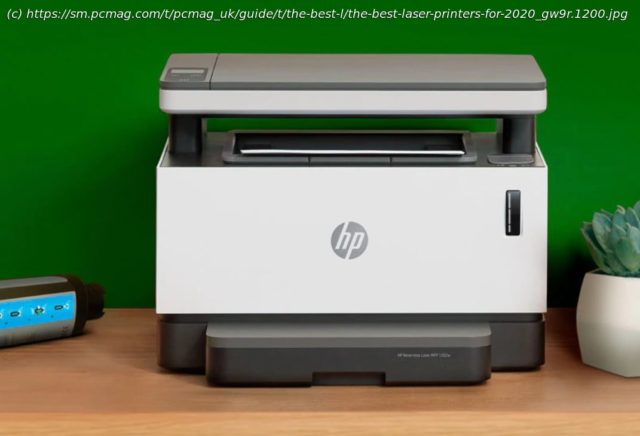Today’s laser printers deliver unparalleled speed, pristine text, and reliable paper handling. If that’s what you need, find the best one for your home or office with our shopping tips and list of top-rated models, based on our deep-dive reviews.
Laser printing has had a tough time of it in recent years. The pace of innovation with this older printer technology (barring tweaks to toner formulations) has slowed to a crawl. Plus, high-speed business inkjet printers with low costs per page, such as those in HP’s PageWide and Epson’s WorkForce lines, have been nibbling through laser printers‘ lunch—and are now eyeing their dinner. Still, laser printers have remained relevant by focusing on their traditional strengths: fast print speeds and reasonable costs per page (especially for text output), as well as the extremely clean look of the finished product and the resistance to fading or smudging of toner. On the downside, lasers often have a significantly higher up-front cost, and they’re nowhere near as capable as inkjets at reproducing fine gradients in complex color output such as photos. So, who would find a laser printer a more attractive proposition than an inkjet? In most cases, not the person seeking an occasional-use printer for motley tasks: at one moment to print a personal e-mail, the next to copy a color image out of a book, or to print photos. Lasers are better suited to bulk text output: contracts, long research papers, book drafts. If you print a lot of large jobs, and stick mostly to text and clean graphics instead of color photographs, a laser printer is the right match. It’s also a good one if high-quality, stable text printing matters most. Indeed, certain types of businesses, such as medical offices, may mandate laser printing for archival tasks and record keeping. What Kind of Laser Do You Need? You can break down lasers into four key types, defined by two questions: (1) Is the printer a mono-only laser, or can it do color, too? And, (2) is it a printer, or an all-in-one (AIO) model that can print, scan, and copy (and perhaps handle faxes)? Laser models exist in all four combinations. „Printer-only“ models are well and good; they are all about sheer text or business-document output to the exclusion of all else. If all you need is stacks of relatively uncomplicated documents, they’re perfectly fine for that. They fall into two rough classes: inexpensive units meant for homes or student use (usually monochrome), and larger models designed for a home office, a small office, or a workgroup (which come in mono-only and color varieties). In contrast, the laser all-in-one (often shortened to „AIO“) is a more varied animal. You can find both monochrome and color laser AIOs, but when you’re talking about a mono laser AIO, there is an inherent mismatch of functionality there. Mono laser AIOs obviously print only in black-and-white, but they can scan in color, as well as make monochrome copies of any kind of source material, like a standard photocopier can. In a sense, the mono laser AIO combines the cost efficiency of a mono laser (which requires just one color of toner, black) with the convenience factor that an AIO brings. You just need to know what you’re getting into before you buy one of these. Color laser AIOs, meanwhile, bring much of the functionality of an inkjet AIO and combine it with the clean text that lasers are known for, as well as smudge-proof color output. Just know, though, that color laser toner can be an investment come refill time, often exceeding the cost of the printer. It’s something to think about if you’ll use the color printing function only rarely, as the four cartridges (black, plus cyan, magenta, and yellow toners) can be dear. Also know that as a rule, almost any inkjet’s color photos will be superior in quality to color photos printed on any color laser. Laser-printed color photos tend to look flat. The strength of color laser output is in printing text, business graphics, charts, and the like. So a color laser—given the added cost of its color toner—makes sense to buy if you are sure that you need that kind of color output. Indeed, don’t underestimate the power of a seemingly simple monochrome laser. A mono laser printer can provide the speed, durability, and paper handling to deal with the high printing volume of a busy office. And inexpensive monochrome lasers with modest paper handling can serve as personal desktop printers in any size office. Many current color lasers print photos that are fine for many business uses, such as client newsletters. In higher-quality lasers, the overall output quality for text, graphics, and photos is typically good enough for brochures and other marketing materials, allowing many companies to take such printing in-house. Understanding Laser Printer Connectivity While the vast majority of new inkjets (barring photo printers) are AIOs, with lasers you’ll find an abundance of both single-function printers and AIOs as you shop. AIOs provide copying and scanning in addition to printing, and in some cases, fax capabilities, too. Models with fax functionality will have a phone-line interface. Most laser printers or AIOs include an Ethernet jack, and some integrate Wi-Fi.






